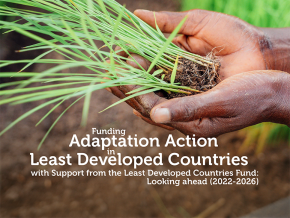
Shakur Belle is a bright but shy girl at Pleasance Secondary School on the east coast of the main island of the Seychelles, a cluster of islands off the coast of East Africa. She got excited by a scheme, involving her school and others on the island, to use natural solutions to fight the negative impacts of climate change.
The students designed an ambitious environmental project that included household surveys, beach clean-ups, mangrove restoration activities, and a public speaking competition. Shakur was involved in designing posters and telling others about the importance of mangrove ecosystems. This shy girl even won the school prize for public speaking. Five schools are now involved in the project, and five articles have been published about it in the local media.
The awareness-raising drive in the Seychelles, which began in March 2016, is just one small component of a five-year project funded by the Global Environment Facility (GEF). The project, Ecosystem-based Adaptation through South-South Cooperation (EbA South), is implemented by UN Environment and executed by the National Development and Reform Commission of China.
The EbA-South project is considered a “first mover” in catalysing global and regional collaboration on ecosystems-based adaptation under GEF guidelines, in particular within the framework of South-South cooperation.
“The South-South cooperative nature of this project is huge, and China, through its Chinese Academy of Sciences, is undertaking a lot of research in different types of ecosystems,” says Fareeha Iqbal, a climate change specialist in the GEF Secretariat. “The value that this project has in being able to share that and translate that knowledge and make it locally applicable in Nepal, Seychelles and Mauritania is invaluable.”
The United Nations Day for South-South Cooperation aims to raise people's awareness of the UN's efforts to work on technical cooperation among developing countries. It also celebrates the economic, social and political developments made in recent years by regions and countries in the south.
See other examples of South-South cooperation.
For more information: diwen.tan[at]unep-iemp.org
Media enquiries: unepnewsdesk[at]unep.org
This story was originally published by UNEP.


